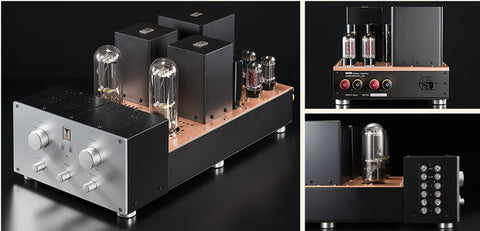Here's Your Kondo Primer
What is Kondo Japan?
Any mention of Kondo Japan is inseparable from their synonymy with natural, unbridled musicality and their mastery of Silver.

From their fantastic silver conductors to their Ongaku Amplifiers, built on the power and magic of their hand-wound silver transformers, silver capacitors, silver lead resistors and silver RCA jacks. Kondo Japan is a near-legendary name in HiFi silversmithing. Making almost every component in used in their highly sought-after equipment.
Kondo: The Man

Kondo Japan was established by Hiroyasu Kondo in October 1979. In an interview with Hiroyasu Kondo, he mentioned his father’s indelible influence upon his life. His father was a Buddhist priest and a tinkerer: Putting a young Kondo in the perfect position to be inspired by both the acoustical properties of Buddhist chants as well as his father’s penchant for building his own amplifiers. Foreshadowing his own future aspirations.

Another major influence cited by Kondo was a recording of the forth movement of Dvorak's “New World” Symphony conducted by Toscanini in 1953. It was the golden age of recording he listened to when he was young. Setting the bar for his own attempts at musical reproduction.
Hiroyasu Kondo spent some time as a recording engineer for SONY before beginning work on the product side. However, he eventually found that his own goals and working methods clashed with the Japanese megacorporation's. He left to build a better sound system, founding Kondo Japan in the process.
Kondo refused to use components made by other brands or manufacturers, choosing instead to embrace a slower, from-scratch, research and development process, putting the priority on his sonic ideals instead of production efficiency.
The groundwork of these ideals, and what would eventually become Kondo Japan’s house sound, was laid when Kondo was exposed to the characteristic sound of European tape recorders such as Neumann and Studer. What particularly struck him was the Studer’s sweet highs, which he set out to replicate with limited success, even when the same materials and components were available to him.
A A810 Studer Tape recorder, similar to the one Hiroyasu Kondo might have drawn inspiration from
It was at that time that Hiroyasu Kondo hit upon the transformer as a key component to achieve that sound, and it was also at that time he began Kondo Japan’s inextricable link to silversmithing in the realm of Hi Fi.
Through his experimentation with silver wires, he discovered that, to his utter delight, that the new transformer sounded magically sweet. A departure from his previous high-distortion, low-resolution attempts.
Kondo: The Silver
Kondo’s approach to silversmithing remains one of the best-kept secrets in HiFi audio, but sources like this 2001 interview with TNT Audio (link) indicate that it seems built on two main pillars: Annealing and Aging.

When metals like silver are rolled out into conductors, they are put under considerable mechanical stress, tearing apart its internal structures. They then undergo annealing, a heat treatment process that restores the material’s structure and improves its ductility.
In his older interviews, Kondo noted that, as much as the annealling process helped in restoring the integrity of the drawn silver conductors, it was unable to go the whole way, leading him to discover that letting the silver rest, letting it age, if you will, was the actual way to complete the restoration of the silver to its original state.
Today, Kondo Japan continues its forward march in musical reproduction helmed by Masaki Ashizawa.
DITA Audio’s Celeste upgrade cable embraces the Kondo legacy through its implementation of Kondo's Silver conductors, bringing the home HiFi experience into portable rigs.
Possibly the first time Kondo’s silver conductors have been implemented in portable audio, the addition of DITA’s new Awesome plug V2 makes this groundbreaking cable the full package.
The sound of synergy, an expression of hedonism, an experience.
Sources:
TNT's 2001 Interview with Hiroyasu Kondo
https://www.tnt-audio.com/intervis/audionote_e.html
Johnathan Scull's 1996 Interview with Hiroyasu Kondo https://www.stereophile.com/interviews/597kondo/index.html
Jurgen Saile's 2013 Interview with Masaki Ashizawa
https://highfidelity.pl/@main-406&lang=en
Marek Dyba's 2017 Kondo Factory Tour
https://highfidelity.pl/@main-734&lang=e
